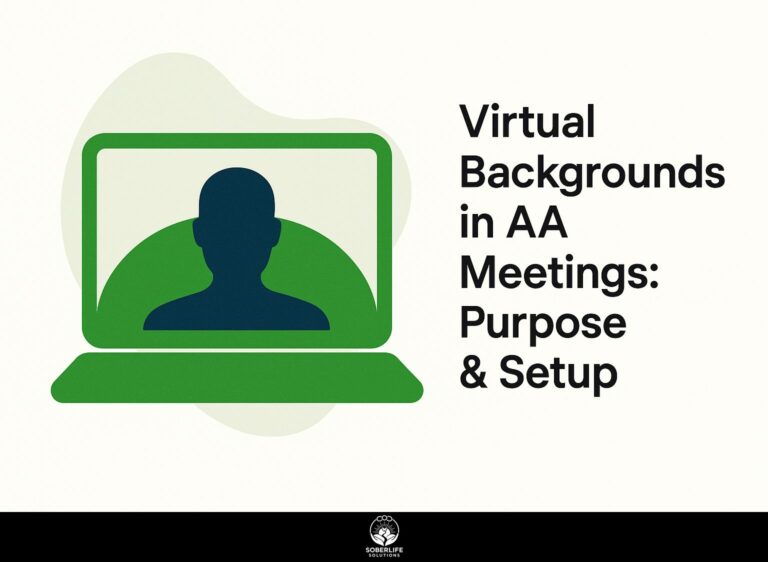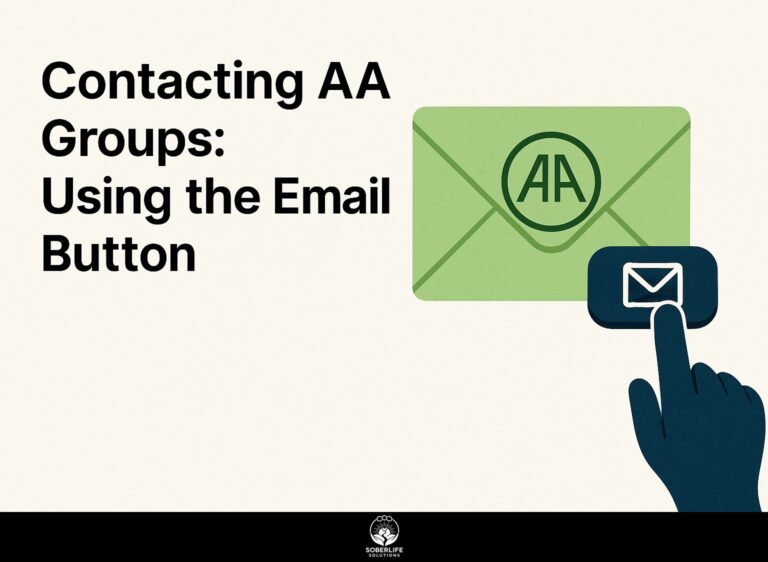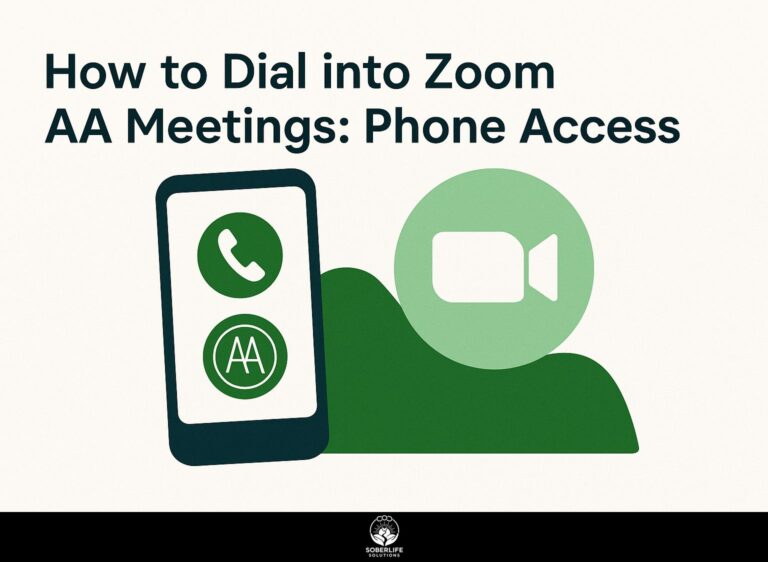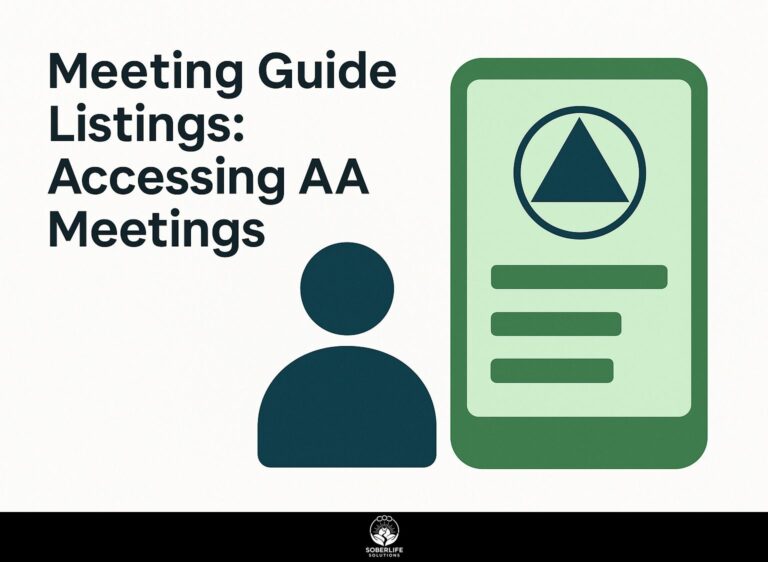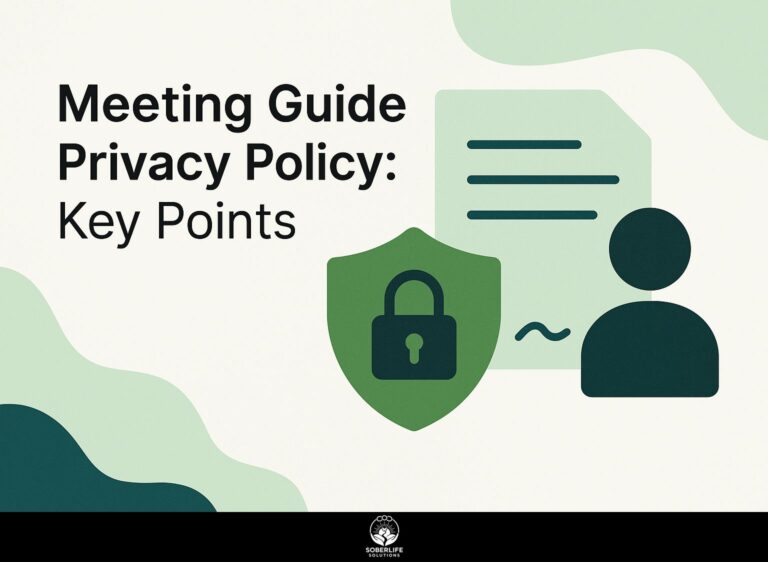Encryption in AA Zoom Meetings: Importance & Setup
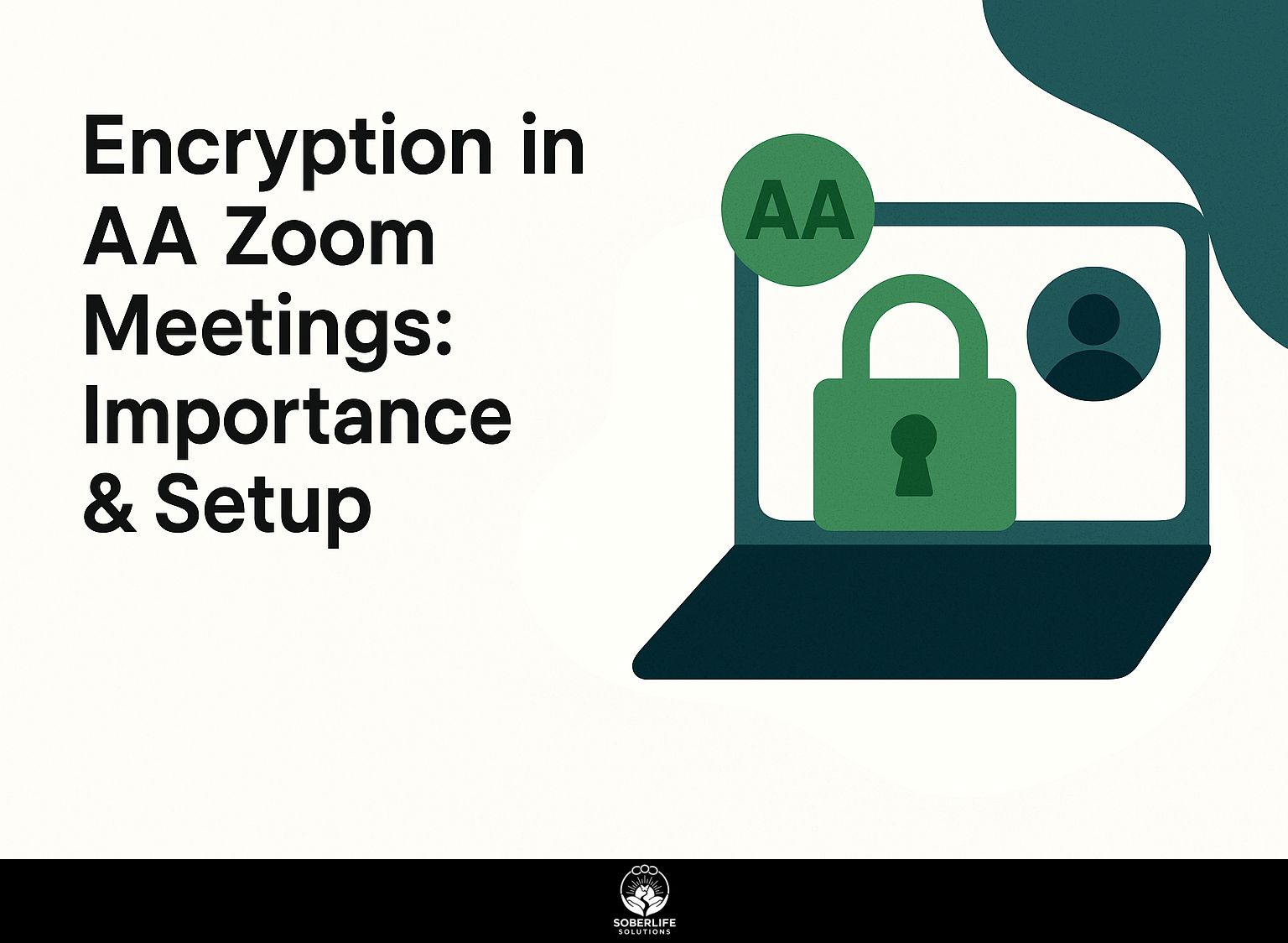
It’s very important to keep Zoom meetings safe, particularly for Alcoholics Anonymous (AA) groups. Encryption is essential for protecting privacy and sensitive information. This article looks at why encryption is important for AA Zoom meetings, describes Zoom’s encryption features, and gives detailed instructions for setting up security options. By learning and putting these steps into action, you can make the environment safer for everyone involved.
Key Takeaways:
Definition of Encryption
Encryption is the process of converting information into a code to prevent unauthorized access, ensuring that only intended recipients can read the data.
For instance, encrypted messaging apps like Signal or WhatsApp use strong encryption methods to secure conversations. This means that even if someone intercepts the messages, they will appear as gibberish without the proper decryption key.
Encryption is used to secure messages, online banking, protect personal information, and keep social media private. Without encryption, sensitive information is vulnerable to cybercriminals, highlighting its importance in safeguarding our digital communications and personal information.
Overview of Zoom’s Encryption Features
Zoom offers different encryption methods to make security better, like End-to-End Encryption (E2EE) and Transport Layer Security (TLS) protocols. For those interested in a deeper understanding of these technologies, the Zoom Cryptography Whitepaper on GitHub provides comprehensive insights.
E2EE makes sure that only people in a meeting can see the content, stopping anyone else from looking at it. TLS protects data while it is being sent, keeping it safe from being intercepted.
Hosts can configure settings to enable E2EE in the Security tab, providing the option to turn it on for all meetings. They can require passwords for meetings and control participants’ ability to record sessions.
These user settings allow hosts to make their meetings more secure, keeping private conversations confidential.
Importance of Encryption in AA Zoom Meetings
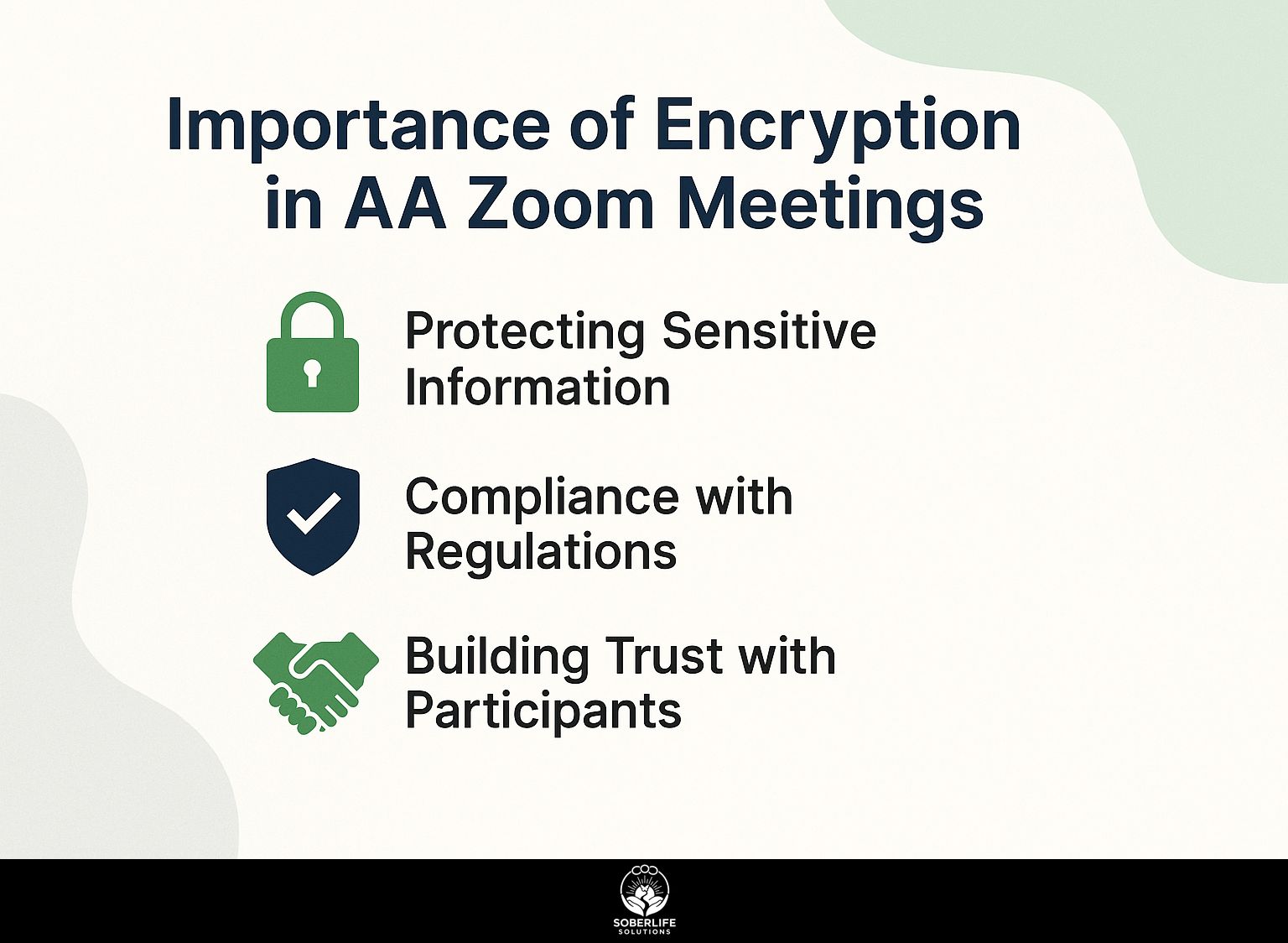
Using encryption in Zoom meetings is important because it protects private information and complies with industry standards. To explore practical ways to enhance privacy in these settings, consider our deep dive on Zoom security for AA meetings that covers privacy settings and tips.
Protecting Sensitive Information
Encryption safeguards sensitive information shared during meetings, such as personal data and confidential business discussions, from unintended exposure.
In practice, encryption helps prevent unauthorized access to sensitive discussions related to salary negotiations or strategic planning that could lead to competitive disadvantage.
For instance, a major retail corporation faced a data breach when unencrypted Zoom calls discussing financial strategies were leaked online.
To protect information effectively, organizations can use Zoom’s end-to-end encryption feature, activated in the settings. Implementing strong access controls and educating employees on secure communication practices can further mitigate risks.
In the end, using encryption along with these steps builds a strong protection against data leaks.
Compliance with Regulations
With more rules like GDPR and HIPAA, using encryption in Zoom meetings is necessary to follow the rules and avoid large fines.
Industries such as healthcare, finance, and education demand strict adherence to these regulations. For instance, health providers must use Zoom’s end-to-end encryption to protect patient data during consultations, while financial institutions rely on secure communications to safeguard sensitive information.
Zoom meets these standards by offering features like password protection, waiting rooms, and the ability to record meetings securely. According to the U.S. Department of Health & Human Services (HHS), using these tools helps organizations handle compliance well and keep the trust of clients, reducing the risk of legal issues.
Building Trust with Participants
Using strong encryption methods builds trust among meeting participants, assuring them that their communications are secure and private.
In fact, a recent survey revealed that 60% of users hesitate to join virtual meetings due to concerns about security.
Using end-to-end encryption in platforms like Zoom protects video and audio streams and also encrypts shared files and chat messages. Enabling features such as ‘waiting rooms’ and ‘password protection’ can reduce the likelihood of unauthorized access. This aligns with findings from a respected source at MDPI, which emphasizes the importance of digital trust in user participation.
By clearly explaining these security steps to participants before meetings, organizations can greatly increase participation and assure attendees that their discussions will remain private.
Types of Encryption Used in Zoom
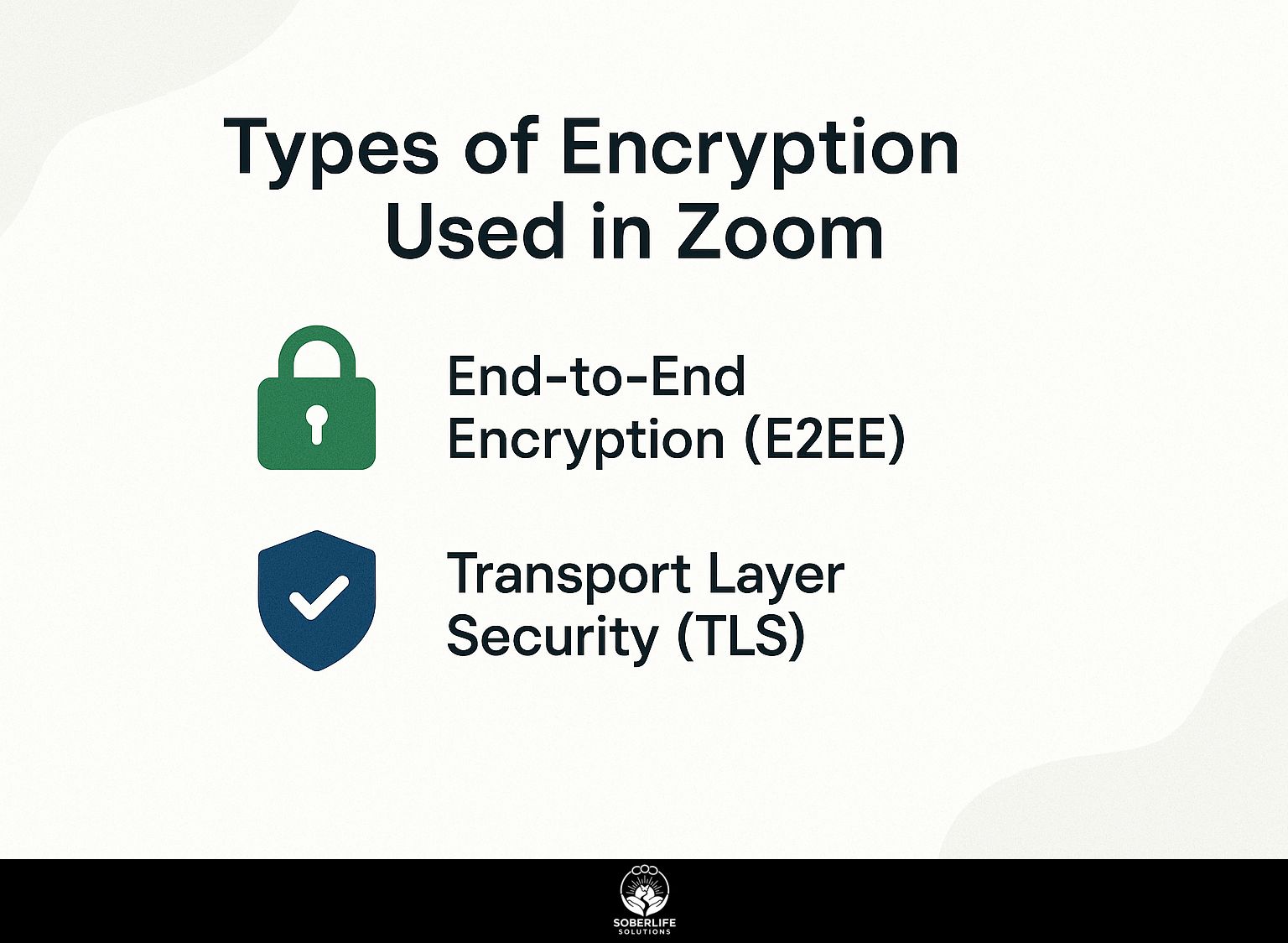
Zoom uses different encryption techniques to improve the safety of online meetings. For those hosting sensitive gatherings, understanding Zoom security settings specifically designed for high-privacy meetings can be crucial.
End-to-End Encryption (E2EE)
End-to-End Encryption (E2EE) makes sure that meeting data is turned into a code on the sender’s device and only turned back into readable data on the recipient’s device, offering the highest level of privacy.
To activate E2EE on Zoom, hosts must enable it in their account settings before scheduling a meeting. After activation, all participants benefit from better security, ensuring Zoom cannot access the meeting content.
This is a significant improvement over standard encryption, where data can be decrypted by the service provider. Keep in mind that some features, like cloud recording and live transcription, are turned off during E2EE meetings.
For businesses handling confidential data, this level of security is needed, making E2EE a key part of current online communications.
Transport Layer Security (TLS)
Transport Layer Security (TLS) is a widely used protocol that encrypts communications between participants and Zoom’s servers, safeguarding data in transit.
TLS works by establishing a secure connection through a series of cryptographic handshakes. This process involves authenticating the server, negotiating encryption methods, and generating session keys.
For example, it checks who is attending and lets only approved people join a meeting. TLS prevents others from eavesdropping on and capturing calls, which is essential for protecting private information.
To keep meetings private and confidential, always turn on TLS during Zoom calls.
Setting Up Encryption for AA Zoom Meetings
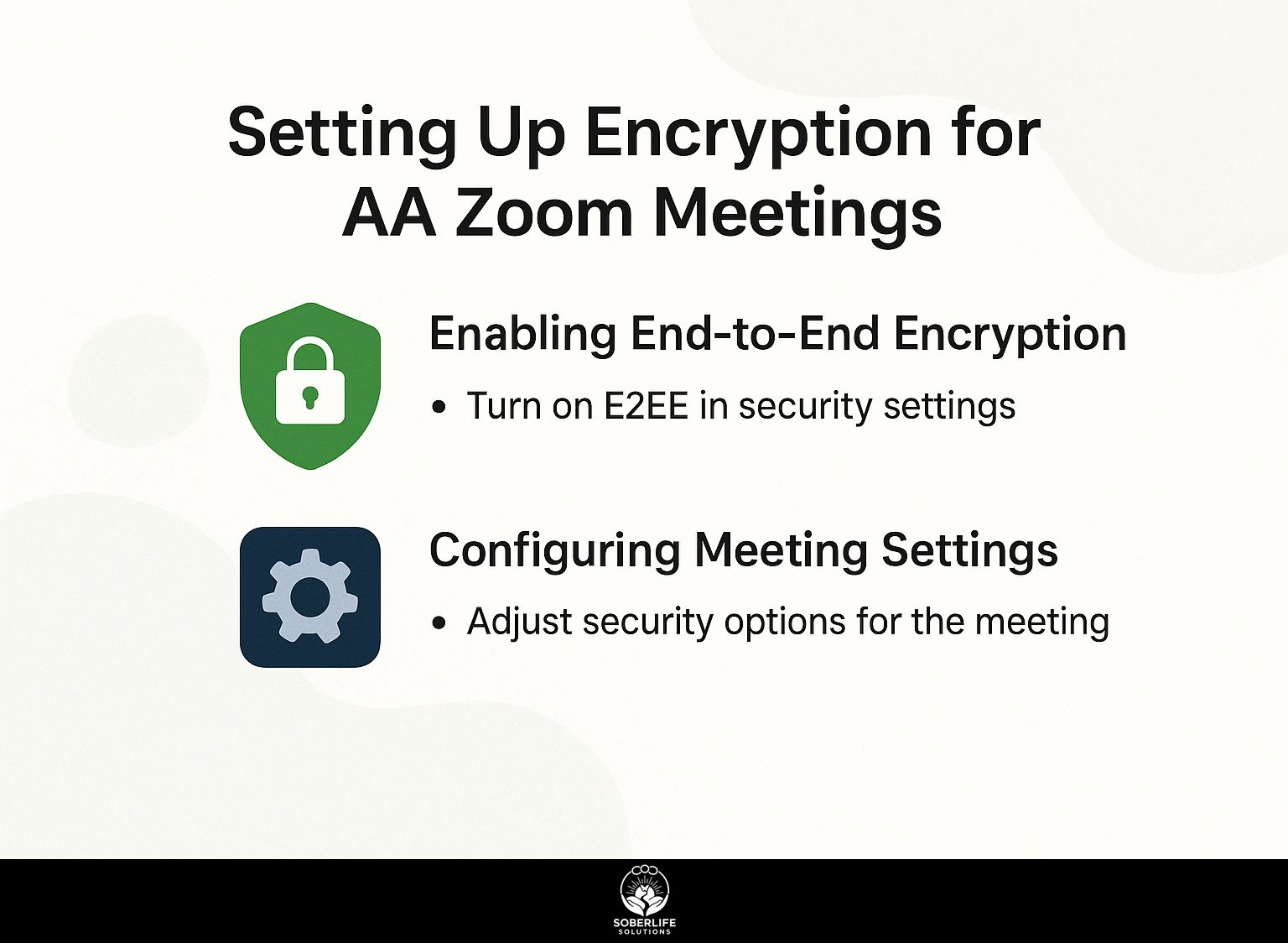
To secure your Zoom meetings, adjust the settings to turn on encryption for your online conversations. For further guidance, explore access and security tips that apply specifically to AA Zoom meetings.
Enabling End-to-End Encryption
To turn on End-to-End Encryption (E2EE) in Zoom, hosts must go to their account settings and turn on the feature for all meetings.
In the Zoom dashboard, go to ‘Account Management’ and select ‘Account Settings.’
Look for the ‘Meeting’ tab and toggle the ‘End-to-End Encryption’ option on. E2EE is available only for Pro accounts and higher, so check if your subscription qualifies.
After activation, all participants will need to join via the Zoom desktop client or mobile app, as E2EE meeting links cannot be joined from web browsers. Regularly remind participants to update their apps for compatibility.
Configuring Meeting Settings
Setting up meeting options correctly is essential for keeping Zoom meetings safe and securing participant information.
To improve security, start by turning on the waiting room feature. This lets you decide who can join the meeting.
Change settings so participants cannot share screens, and only the host can record. Configure permissions to prevent participants from renaming themselves, which can help avoid impersonation.
For instance, if you’re managing a large team meeting, these settings can significantly reduce distractions and maintain order, ensuring a focused and secure environment.
Best Practices for Using Encryption in Zoom
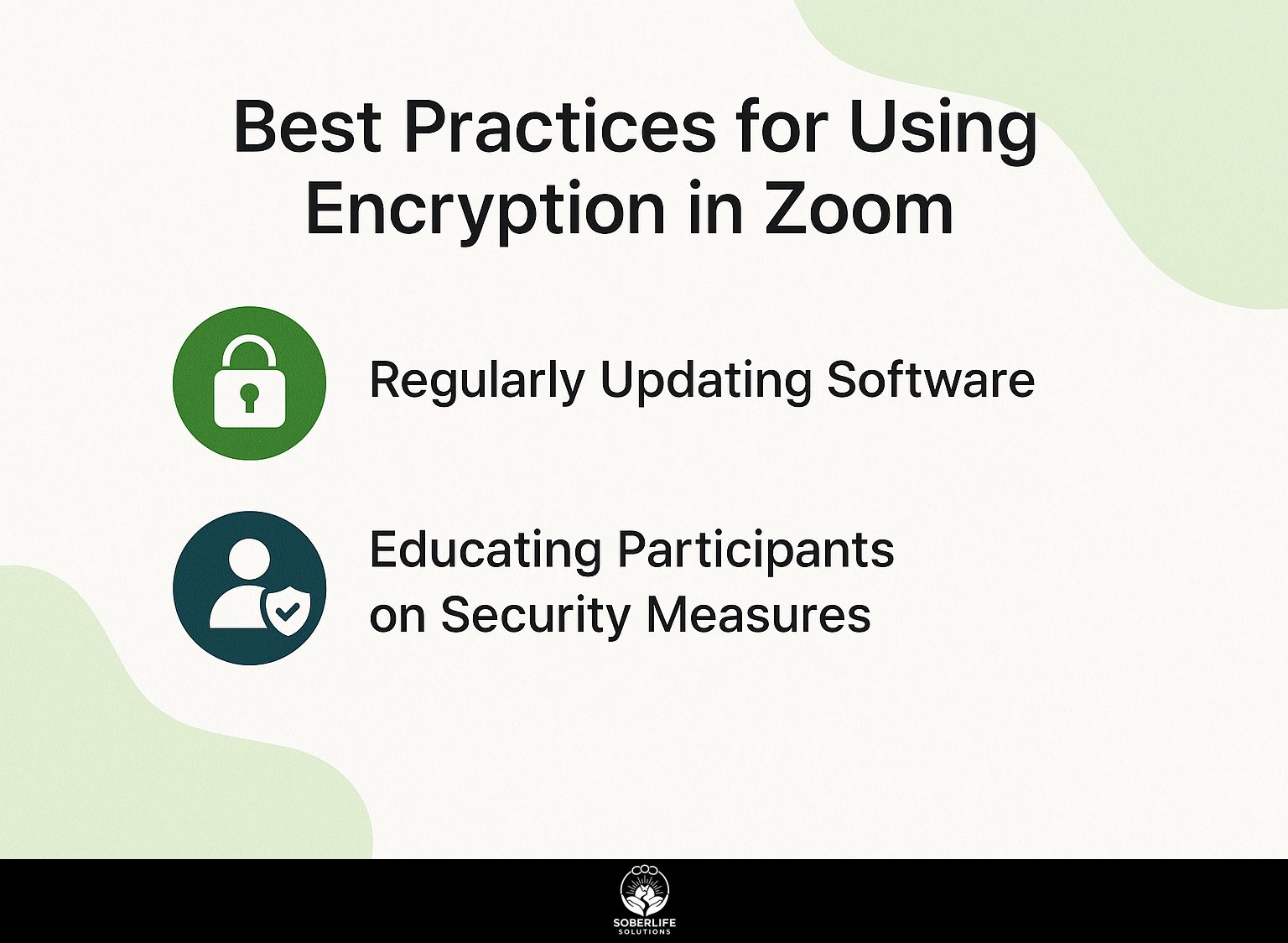
Using the best methods for encryption makes Zoom meetings as secure as possible and lowers the chances of problems with online communication. Related insight: How to Join and Secure A.A. Zoom Meetings: A Guide offers valuable strategies for enhancing the security and privacy of your virtual meetings.
Regularly Updating Software
It’s important to regularly update Zoom software to keep it secure, as updates typically include key improvements to encryption and corrections for software issues.
Check for updates on your Zoom app every two weeks to keep it current. Start the app, tap your profile picture, and select ‘Check for Updates’.
Set alerts on your calendar to remind you to check for updates. For users on Windows and macOS, turning on automatic updates can make the process easier.
By changing these small settings, you can keep your data safe and improve how you use Zoom.
Educating Participants on Security Measures
Explaining security measures in meetings helps everyone understand how to protect their information during Zoom calls.
- Start by sharing a document outlining best practices, including using unique meeting IDs and enabling waiting rooms.
- Before the meeting, send notices emphasizing the need to keep meeting links private.
- During the session, quickly explain Zoom’s security features, like muting participants when they join and locking the meeting after all have arrived.
- Consider using a simple training video from resources like Zoom’s support page to reinforce these key points, ensuring participants feel confident and informed throughout.
Frequently Asked Questions
What is encryption and why is it important in AA Zoom Meetings?
Encryption is the process of converting information into code to prevent unauthorized access. In AA Zoom Meetings, it is important to safeguard the security and privacy of the personal discussions and details shared by members.
How does encryption work in AA Zoom Meetings?
AA Zoom Meetings use end-to-end encryption, which means the data is encrypted on the sender’s device and can only be decrypted by the intended recipient. This guarantees that nobody, not even Zoom, can see what is shared in the meeting.
Do I need to set up encryption in AA Zoom Meetings?
No, the encryption is automatically enabled in all AA Zoom Meetings. However, make sure you have the newest version of Zoom for the best security.
Can I turn off encryption in AA Zoom Meetings?
No, encryption cannot be turned off in AA Zoom Meetings. This is to protect everyone’s safety and privacy, and to follow Zoom’s security rules.
What measures can I take to further secure my AA Zoom Meetings?
In addition to encryption, you can also set a password for your meetings, enable the waiting room feature, and only allow authenticated users to join. This will add an extra layer of security to your meetings.
Is encryption in AA Zoom Meetings 100% secure?
Although encryption helps keep your meetings secure, it is not completely fail-safe. It is important to also follow good internet security practices, such as not sharing meeting links on public platforms and being cautious of unknown participants in the meeting.

